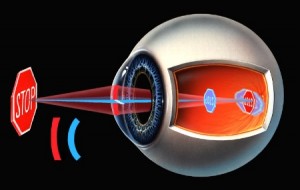If you have blurred vision or it is good but has headaches, rolling eyes or other discomfort, you may suffer from astigmatism.
Astigmatism is a condition that prevents the eye to form a clear image on the retina. This is usually due to an irregularly shaped cornea (the clear outer layer that covers the front of the eye). Sometimes, astigmatism is due to scarring of the cornea or abnormalities in the shape of the lens (the lens fine focusing inside the eye). This condition can be corrected with glasses or contact lenses. Most people have astigmatism to some degree, but in many cases are so slight that it should be corrected.
It is important to realize that the astigmatism is a hereditary condition. In many cases children do not realize that their vision is poor, they do not have anything to compare. Astigmatism in children is often not identified until it begins to affect his schoolwork. This underscores the importance of regular eye checks done by a professional.
The effects of astigmatism
In the normal eye, the cornea and lens each have a perfectly spherical surface as if it were a slice of a soccer ball (the lens is actually bi-convex, which both sides are spherical). This optical system guarantees that all the light entering the eye focuses sharply on the retina.
In the astigmatic eye, the corneal shape (or sometimes the lens) is oval, very similar to the shape of a rugby ball. In this case, the cornea has two different curvatures as “meridians” or “axes” are mutually perpendicular. Only the light that focuses on one of these bends form a sharp image on the retina. Remaining focused either in front or behind the retina, according to the degree of depth of focus. The result is blurred vision.

